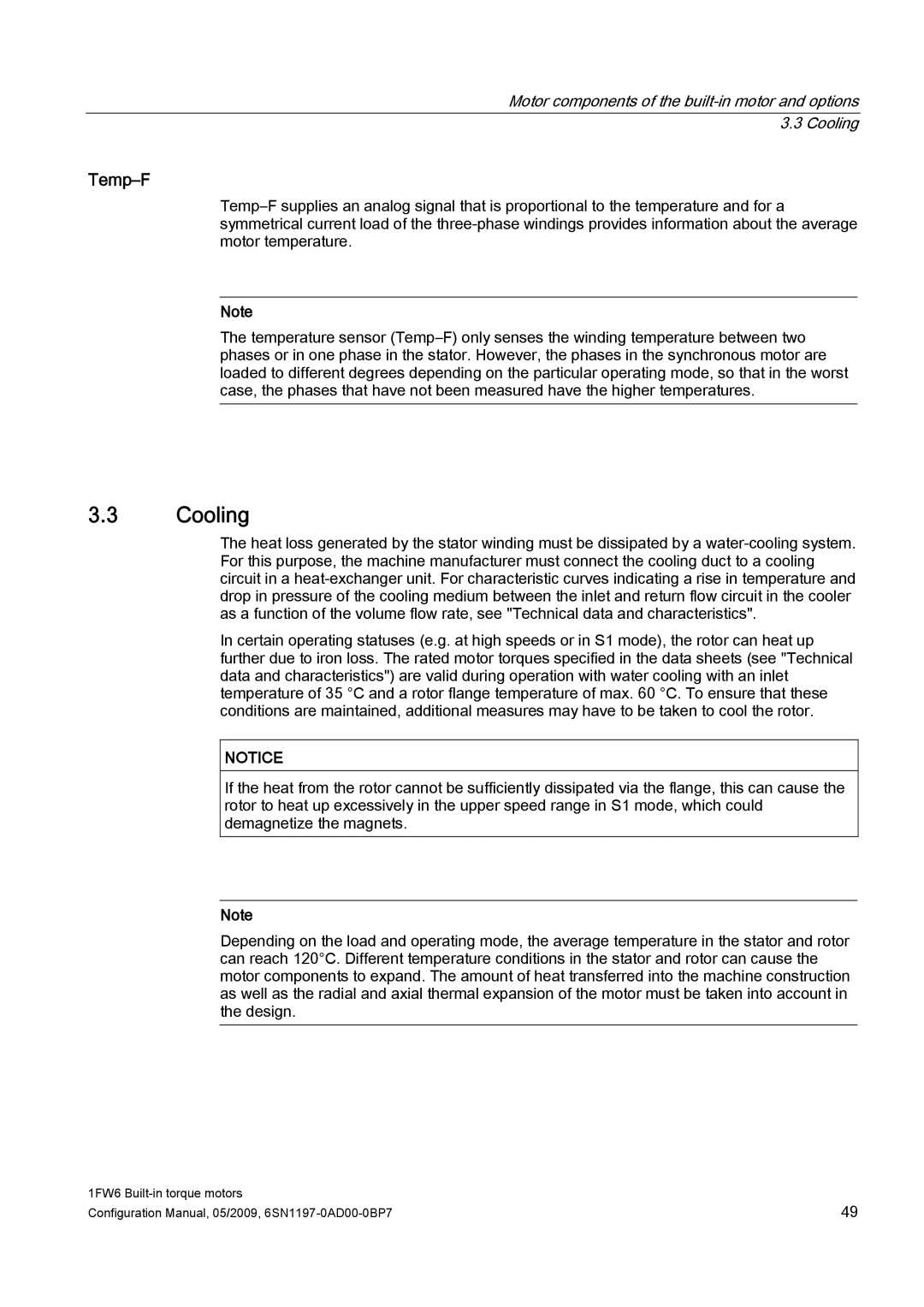
Motor components of the
Temp–F
Note
The temperature sensor
3.3Cooling
The heat loss generated by the stator winding must be dissipated by a
In certain operating statuses (e.g. at high speeds or in S1 mode), the rotor can heat up further due to iron loss. The rated motor torques specified in the data sheets (see "Technical data and characteristics") are valid during operation with water cooling with an inlet temperature of 35 °C and a rotor flange temperature of max. 60 °C. To ensure that these conditions are maintained, additional measures may have to be taken to cool the rotor.
NOTICE
If the heat from the rotor cannot be sufficiently dissipated via the flange, this can cause the rotor to heat up excessively in the upper speed range in S1 mode, which could demagnetize the magnets.
Note
Depending on the load and operating mode, the average temperature in the stator and rotor can reach 120°C. Different temperature conditions in the stator and rotor can cause the motor components to expand. The amount of heat transferred into the machine construction as well as the radial and axial thermal expansion of the motor must be taken into account in the design.
1FW6 | 49 |
Configuration Manual, 05/2009, |
